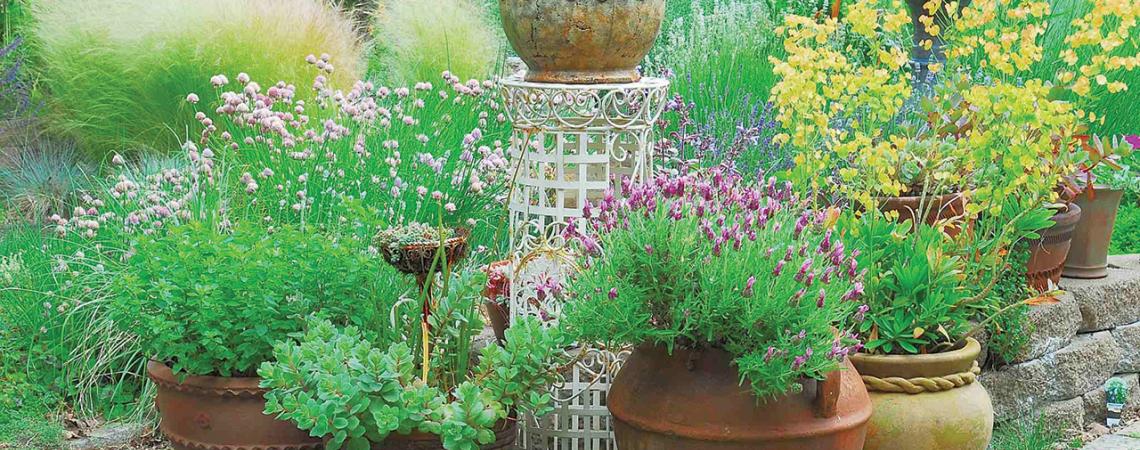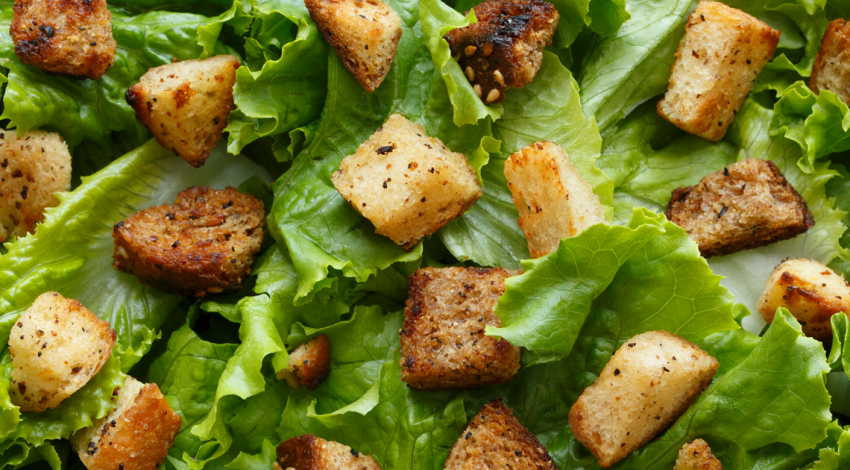Containers full of lush, green, fragrant foliage not only make a convenient, fresh pantry, they turn any open space into a conversation spot.
You may have room to grow culinary herbs in your garden, but a group of potted herbs growing right outside your door offers both portability and easy access to your favorite herbal seasonings in the kitchen. Growing herbs in containers also solves many gardening problems: it allows easy improvement of poor soil; curbs invasive herbs such as mint; and even spares gardeners the agony of sore knees.
Choose what to grow
Just about any culinary herb can be grown in a container. Even tender edible perennials can handle a spot in your outdoor potted garden, as long as you bring them to a sheltered area or overwinter them indoors before cold weather arrives.
Some herbs, however, are more suited to growing in pots than others. These include familiar favorites like chives, mint, oregano, sage, rosemary, and thyme; annual must-haves such as basil, parsley, summer savory, and dill; stately or tender herbs like bay, pineapple sage, or horseradish; and even edible flowering herbs that may be somewhat unfamiliar as seasonings, such as borage, calendula, lavender, nasturtiums, and scented geraniums.
Give them a good home
Most any pot or container at least 6 inches wide or larger can be used for growing herbs, as long as it has drainage holes. Choose the largest pot possible to provide more room for growing roots, which will ultimately give you a bigger plant to harvest from. Be sure to fill your containers with a lightweight potting mix. (Garden soil is too heavy and will compact in containers and smother plant roots.) Look for a premium mix that includes ingredients such as perlite, vermiculite, or pumice to help loosen and aerate the final mix.
Potting pointers for top production
When planting your containers, fill the pot two-thirds full with moistened potting mix, then plant herbs so that the top of the plant’s root ball sits about 1 to 2 inches below the container’s rim. Fill with additional potting mix as needed, press plants firmly in place, and then water thoroughly until you see water come out the drainage holes.
Maintaining season-long growth
When it comes to how often to water plants, allow the potting mix to dry slightly between waterings for Mediterranean plants (rosemary, thyme, etc.) and other drought-tolerant herbs, but keep the mix slightly moist at all times (like a well-wrung sponge) for basil, chives, and other herbal seasonings with moderate to average moisture needs. Since water needs vary by the pot’s type and size, location, outdoor temperature, and the type of herbs being grown, use a moisture meter or your finger as a guide. If the soil feels dry 1 to 2 inches below the surface, then it’s probably time to water.
Feed plants during the growing season every three to four weeks with a liquid organic fertilizer, or apply a slow-release organic fertilizer two to three times a year. Remember to remove flowers as they fade. Doing so will encourage plants to bloom over a longer period of time. Plants will also be more productive if you pinch back leggy stems and occasionally prune and harvest the foliage. The bonus for you is a bushier, healthier plant and more abundant harvests for seasoning a variety of foods.
Add a twist of lemon
When it comes to potted seasonings for the kitchen, a growing lemon-lover’s medley of fresh herbs will bring an enticing citrus fragrance, ornamental attraction, and refreshing lemon flavor to your garden and table. Here’s the lemony lowdown on some of the best.
Lemon verbena is a tender perennial perfect for growing in a pot, as it can easily be overwintered indoors. Delicious lemon-like scent and flavor enhance a variety of foods, from appetizers to desserts.
Lemon grass can also be overwintered indoors. The tender leaves and white bulb are best for adding to stir-fries, curries, and other Asian-inspired dishes; brew leaf buds and chopped stems into a flavorful lemonade or iced tea.
Lemon thyme has a strong lemon scent and flavor, somewhat reminiscent of lemon-pepper seasoning. Sprinkle fresh or dried leaves into soups or stir-fries, over grilled chicken or fish, or as a topping for pizza, salads, or baked potatoes.
Lemon basil is a sun-loving annual bursting with the heavenly essence of lemon and fresh basil. Use in stir-fries, casseroles, baked goods, grilled meats, iced beverages, and hot teas, or to make herbal vinegar or a tasty lemony pesto.









